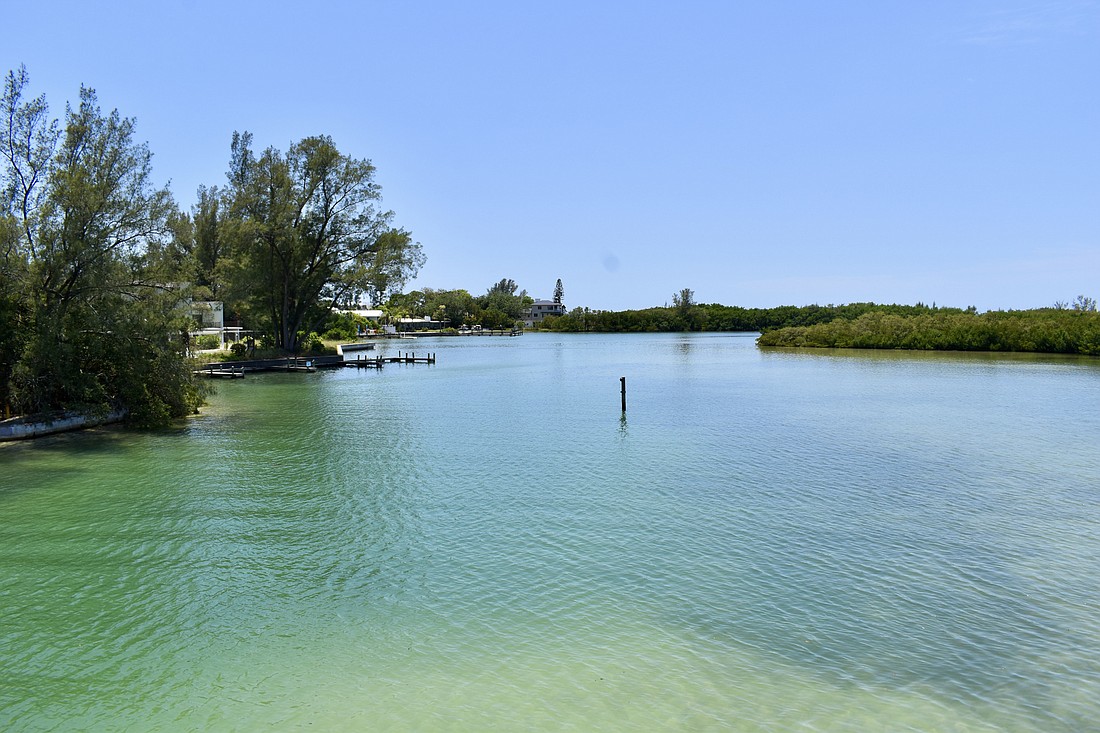- July 26, 2024
-
-
Loading

Loading

When it comes to making sure Longboat Key's beaches are stocked with sand, the town's work is never done.
To that point, coastal engineers updated the Longboat Key Town Commission on June 6 on the results of the dredging project from about a year ago, as well as what's ahead for the Key's beaches.
Public Works Director Isaac Brownman and coastal engineer Al Browder said Longboat Key’s last beach nourishment project was completed ahead of schedule and under budget, but there’s still a long-term battle to control erosion.
Browder said that nearly a million yards of sand were dredged from Passage Key Inlet, Longboat Pass and New Pass and placed back on the beaches, and Brownman said the project came in $3.6 million under budget and took only six months instead of three years. The work, which was conducted in between April and October of 2021, was hastened by the presence of contractors being used for similar tasks by other member jurisdictions.
Browder, discussing the work that’s already been done, said that 750,000 cubic yards of sand were dredged from the Passage Key inlet and placed along 4.4 miles of the Longboat Key shoreline. Five rock groins were constructed as part of this phase of the project. All of that sand, said Browder, was taken 10-15 miles from its original dredging point by barge to a pump-out location and then moved along the beach as needed.
“All of the materials for the project came in on the water side using the dock at the south end of Anna Maria Island,” he said. “We did not truck any of this material through town to get it out to the beach; that would have been very, very challenging for everyone involved.”
The major part of the north end restructuring involved constructing five rock groins — two south of North Shore Road and three north of it — and 364 marine mattresses designed to direct the flow of sand over the coming months and years. Those structures, which involved 10,400 tons of armor stone and 1,280 tons of mattress stone — are designed to work with erosion instead of attempting to stop it.
Browder and Brownman prepared satellite photos that have shown how the sediment near Greer Island has changed over time, and the goal long-term is to be able to change the erosion and sediment shifting patterns to alleviate the spit and restore access to the channel.
"Once this thing fully equilibrates, we hope to see a reasonable amount of sand — key emphasis being reasonable — pass through the structure and feed the spit,” said Browder. “But not feed the spit too much that it just runs into the eastern end of the of the whole feature.
“It's a real balancing act here at the north end to satisfy all the recreational uses and desires and not have a whole bunch of sand end up in canal in the pass.”
There were also two other areas of dredging and beach nourishment conducted as part of the project. Eighty thousand cubic yards were dredged from Longboat Pass, and another 170,000 cubic yards of sand were taken from the New Pass area. That sand was used alongside 1.2 miles of shoreline by Gulfside Road and on the Key’s southern end.
On the north end, Browder said that engineers are watching as the spit shoreline evolves and are monitoring for scarps; they will update their beach survey this month. Browder suggested that if commissioners want an annual update on beach conditions, they should probably shoot for sometime between September and November to take advantage of the new survey.
On the south end, engineers are seeking permits to strengthen the upper portion of an existing rock groin along New Pass, and they hope to be able to do that this winter.
“What we intend to do is come along the north side of this thing, peel back some of the sand, place some smaller stone to plug the gaps but then create what we call a cutoff wall,” said Browder. “It’ll be made out of a geo-textile fabric kind of felt … and then have armor stone — a long, narrow run of armor stone — placed along the north side of the existing structure. That will tighten up the flow, tighten up the structure to not allow sand to flow through it.”
Brownman said that future projects will focus on battling sand that has migrated and expanded the Greer Island spit, and there will be a dredging project to clear sand from the lagoon and improve channel access.
A preliminary dredging project was conducted in early 2021 to push the waterline away from the Land's End dock. The proposed future dredging would remove 25,000 to 30,000 cubic yards of sand from an area known as Canal 1A, and the sediment would be placed along the shoreline.
The dredging will go down to a depth of 5 feet in Canal 1A, and sand will be cleared from both sides of the bridge area over time. That project could begin by the end of 2022, but the plans and budgeting process have yet to be finalized.
Brownman said 15-year management permits have already been approved by both the U.S. Army Corps of Engineers and Florida Department of Environmental Protection. The next major beach renourishment cycle is scheduled for fiscal year 2029.
“When we peel this back, we won’t see the rate of filling back in that we did before,” he said.
“Time will tell. We’re going to have to observe this over time. But that’s the idea.”